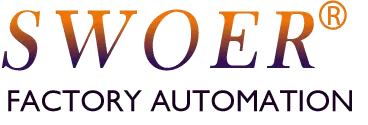1. Introduction to Parts Feeding Systems
2. What Is a Feeder Bowl System?
- The Role of Feeder Bowl Systems in Automation
- Benefits of Using Feeder Bowl Systems
3. How Vibratory Parts Feeders Improve Efficiency
- Key Features of Vibratory Parts Feeders
- Common Applications of Vibratory Feeders
4. Choosing the Right Parts Feeder Systems for Your Needs
- Factors to Consider in a Custom Parts Feeder
- Tips for Optimising Feeding Performance
5. Why Choose a Custom Parts Feeder Manufacturer?
- Advantages of Customised Feeding Solutions
- Insights into Manufacturing Excellence
6. Conclusion
1. Introduction to Parts Feeding Systems
Parts feeding systems are an integral component of modern manufacturing and automation. They streamline production by ensuring that individual parts are oriented, sorted, and delivered efficiently to the next stage of the process. Whether you’re in the automotive, pharmaceutical, or electronics industry, reliable parts feeding systems save time and reduce errors, making them a must-have for any assembly line.
In this blog, we’ll dive into feeder bowl systems and vibratory parts feeders, exploring their benefits and applications and how to select the perfect custom solution for your business.
2. What Is a Feeder Bowl System?
The Role of Feeder Bowl Systems in Automation
A feeder bowl system is a vital piece of equipment designed to feed individual components into a production line in a controlled manner. These systems consist of a vibrating bowl that uses customized tooling to orient parts correctly before they proceed further along the assembly process.
In automated setups, feeder bowl systems are often paired with vision inspection technology, robotics, or conveyors to enhance precision and productivity.
Benefits of Using Feeder Bowl Systems
- Consistency: Feeder bowl systems maintain a steady flow of parts, ensuring uninterrupted production.
- Customization: These systems can be tailored to handle unique part shapes and sizes.
- Versatility: Suitable for various industries, including automotive, packaging, and electronics.
- Cost-Efficiency: Minimising manual handling reduces labor costs and speeds up operations.
3. How Vibratory Parts Feeders Improve Efficiency
Key Features of Vibratory Parts Feeders
Vibratory parts feeders are the backbone of feeder bowl systems, offering unmatched reliability and flexibility. These feeders use controlled vibrations to move parts through the system, ensuring consistent orientation and delivery.
Key features include:
- High Precision: Handles complex and delicate components with ease.
- Durability: Built to withstand heavy-duty use in industrial environments.
- Adaptability: Easily adjusted to accommodate different part geometries.
Common Applications of Vibratory Feeders
- Automotive: Feeding fasteners, gaskets, and components into assembly lines.
- Pharmaceuticals: Handling capsules, syringes, and small medical devices.
- Consumer Electronics: Delivering screws, connectors, and other small parts.
By enhancing production speed and accuracy, vibratory parts feeders play a crucial role in maintaining competitive efficiency.
4. Choosing the Right Parts Feeder Systems for Your Needs
Factors to Consider in a Custom Parts Feeder
Selecting the right parts feeder system requires understanding your specific production requirements. Here are key factors to keep in mind:
- Part Specifications: Consider the size, shape, and material of the parts being handled.
- Speed Requirements: Ensure the system meets the required feed rate for your assembly line.
- Integration: Check compatibility with existing automation systems, such as robotics or vision inspection.
- Customisation Options: Look for a manufacturer capable of tailoring the feeder to suit your needs.
Tips for Optimising Feeding Performance
- Regular maintenance to prevent downtime.
- Properly calibrating the vibratory system to match part characteristics.
- Using high-quality materials to reduce wear and tear.
5. Why Choose a Custom Parts Feeder Manufacturer?
Advantages of Customised Feeding Solutions
Partnering with a reliable manufacturer like SWOER ensures that your parts feeding systems are tailored to meet your specific production requirements. At SWOER, we specialise in designing and manufacturing customised vibratory parts feeders and feeder bowl systems, offering:
- Improved Efficiency: Our tailored designs ensure seamless integration with your assembly line.
- Reduced Waste: Precise feeding reduces material loss and enhances sustainability.
- Flexibility: We adapt our solutions to evolving production needs, ensuring long-term value.
Insights into Manufacturing Excellence
SWOER stands out as one of the top manufacturers of custom parts feeders, known for:
- Expert Design Consultations: Our team collaborates with you to create solutions aligned with your operational goals.
- High-Quality Craftsmanship: Using premium materials and advanced technologies, SWOER delivers reliable and durable systems.
- Global Support: With over a decade of experience and a presence in multiple markets, SWOER provides ongoing technical support to keep your systems running smoothly.
Choosing SWOER as your custom parts feeder manufacturer means partnering with a team that prioritises your success and helps you stay ahead in today’s competitive market.
Contact Us6. Conclusion
Feeder bowl systems and vibratory parts feeders are essential components of automated manufacturing. They improve efficiency, enhance accuracy, and reduce operational costs. By working with a custom parts feeder manufacturer, you can achieve a tailored solution that meets the unique demands of your production line.
Ready to enhance your automation with custom parts feeding systems? Contact us today to discuss your requirements and discover the perfect solution for your business!
